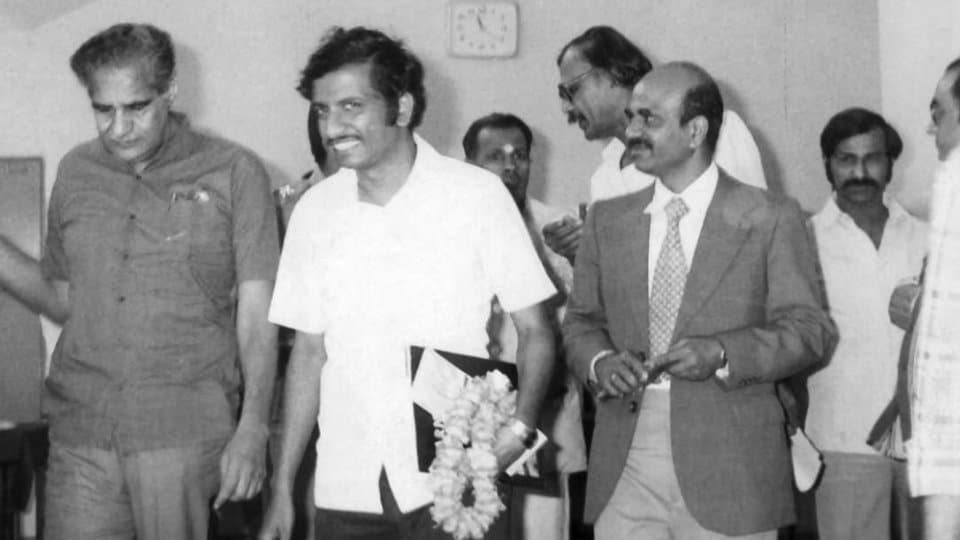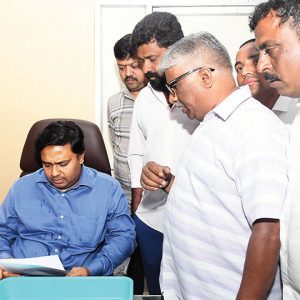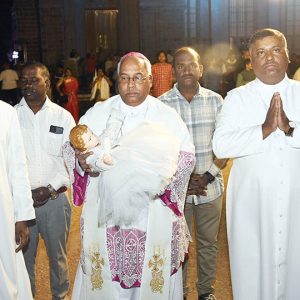
Kuldip Nayar, India’s veteran journalist, author, former Member of the Rajya Sabha and the former High Commissioner of India in London, passed away on Thursday 23rd August, 2018 peacefully after a brief illness in Delhi. He was 95.
Kuldip Nayar was no stranger to me though I am certainly a stranger to him. My professional calling as a journalist naturally attracted my attention to everything he wrote and everything that was written about him. It doesn’t mean that I have read every book or article of his, but I have certainly read a few books of his out of nearly 21 books that he has written during his long life.
The first book I read was ‘The Judgement: Inside Story of the Emergency in India’ published in 1977 immediately after the infamous Emergency imposed by Indira Gandhi was lifted. It was a beautifully written book with minute details of how the seeds of the Emergency were sown as early as the election campaign for the Parliament by Indira Gandhi was launched.
Another book was ‘Between The Lines.’ Like all books by him it was easily readable and also understandable, without any gimmick of rhetorics. The third book I read was his autobiography titled ‘Beyond The Lines,’ apparently inspired by his earlier book ‘Between The Lines.’
Now, once again I am reading this book and this second reading one might think would diminish my interest. But no. Rather it has increased my interest because Nayar reveals much of the happenings since the day he migrated to India in 1948 from his personal experience of meeting people of consequence and getting information straight from the horse’s mouth as they say. Being in Government Service, in the beginning of his career, as an Information Officer and later as a free-booting journalist he could easily access important sources of news which he has used freely in the book.
Reading the news of his passing away, I remembered two events pertaining to him that concerned me. One was his visit to Vartha Bhavan in our city, which was presided over by my friend K. Vijaya Kumar, the Dy. Director of Information. Kuldip Nayar was brought there by Prof. K.V. Nagaraj of Journalism Department, Manasagangothri, who had apparently invited him for a lecture or a function. He spoke in a very genial manner and fielded a few questions from my tribe.
While this was a very pleasant thought about him, another reason for remembering him was my visit to Wagah Border in the year 2014 when I went to Amritsar with my wife and a few friends to attend a marriage. While in Amritsar, I told my friends that we should visit Wagah Border between India and Pakistan which is close to Amritsar.
My friends were obliging but asked why I was particular about the visit. I told them that it was Kuldip Nayar who made me interested in wanting to visit the Wagah Border. Nayar used to go there with his friends at night every year on Independence Day holding candles praying for Indo-Pakistan friendship.
That his aspiration remained a dream is another matter. It was on this visit I was given a very expensive piece of diamond jewellery by my wife for safe-keeping, which I lost in that hurried visit with so many security checks, frisking and a long distance walk in the crowd.
Be that as it may, it would be many years in the future for India to get a journalist, a pacifist and a social activist of Kuldip Nayar’s kind. Should anyone ask me what manner of a man he is, I would unhesitantly say that he is an eternal optimist. If you read his book ‘Beyond The Lines’ you would wonder why despite his experience of Muslims in his native Sialkot not wanting his family to be there, where his father wanted to go back, Nayar doggedly pursued, all his life, for Indo-Pakistan friendship. He wanted to build goodwill among the people of these two countries even when the two governments were hostile to each other.
It is, therefore, not surprising that his family was among the very few Hindu families who did not want to migrate to India. This was because Hindus in Pakistan had heard Mohammed Ali Jinnah, founder of Pakistan, categorically pronounce that “the State would never mix religion with politics.” Apparently, Hindus in Pakistan were fooled, unlike the Muslims in India who continue to enjoy the benefit of Secularism.
Jinnah, in a way, appeared to be sincere when he said that he wanted Pakistan to be a Secular State where minorities like Hindus, Christians and Sikhs could enjoy the benefits of secularism. Kuldip Nayar writes that Jinnah even selected a Hindu poet Jagan Nath Azad to compose the National Anthem of Pakistan. But the Anthem was changed after Jinnah’s death in the year 1948 for Communal consideration. For them, a Hindu writing the National Anthem of a Muslim country appeared unthinkable. It is surprising that despite getting all these early warnings, Kuldip Nayar and his father aspired to go back to Sialkot. Sadly the local Muslims where they lived did not welcome them.
I guess every human being’s life is pre-determined going by what Kuldip Nayar had written in the very second page of his autobiography. He writes that his grandmother was a great believer in astrology and had got prepared horoscopes of her children by a leading Pandit forecasting the future. Once when that Pandit visited their house he asked him to read his palm. The astrologer had said that he would read the Malechh Vidya (a language of foreigners), and he predicted that Nayar would travel a lot by Udhan Khatola (aeroplane). However, when Nayar’s younger brother Sindhu’s hand was shown to the astrologer to read, he refused saying the lines on his hand had not properly developed. Kuldip Nayar writes, ‘this was perhaps the astrologer’s way of saying that Sindhu would not live long.’ Sindhu had died of cholera soon after on the lap of his elder brother Kuldip Nayar and his last words were “Bhapa leave me, I can see the light, I am going there.” And he was gone.
Narrating this incident, Nayar writes rather philosophically, “His parting words often make me wonder whether there is indeed a higher power controlling the Universe. The light to which Sindhu referred represents a power which eventually leads us in our journey from life to death.”
Kuldip Nayar says that partition had led to the killings of Hindus and Muslims numbering between two and three million according to Lord Mountbatten, the last Governor General of India and adds that Muslims were given shelter in Delhi’s Red Fort where “many Muslims argued that the British had seized rule from Muslims and should have returned the country to them.”
The book is like reading the history of India after partition till today or at least till 2012 when he wrote the book, specially about the political intrigues and manipulations. Let it be. However, it is interesting to read about Pandit Jawarharlal Nehru’s death on 27th May, 1964. He writes, “Nehru’s Physician Dr. K.L. Wig had given specific instructions that he should not be left alone and that there was no one with him when Nehru went to the bathroom where he fell and died. Wig told me that Panditji must have been lying on the floor for over an hour before he was found in that condition.”
Interestingly, he concludes the book with a sagely advice to our politicians and citizens thus: “The time has come to think seriously about a Presidential form of Government providing the individual elected a fixed tenure of say five years to function without requiring manoeuvring a majority in Lok Sabha… safeguards can be built in to ensure that the President does not turn into a dictator.”
An optimist that Kuldip Nayar was, as I mentioned earlier, his last sentence is that “the confidence of the people in their country sustains hope that India will see the sunlight increasing and the shadows receding.” India Shining ?!
Tailpiece: A couple of days after I wrote this Abracadabra last week, a gentleman came to my office in response to an advertisement for translator’s post to meet me on Sept. 8, 2018. During the interview, it was revealed to me that he had also taken a course in astrology from BVB Mysuru. He explained the reason saying his grand-father and father too had juggled in astrology and he wished to continue the tradition in the family…
I asked if he had seen his own future through astrology and would he get this job. He smiled and gently said, ‘Astrology says after September I would.’ And he did !
Jai Hind
e-mail: [email protected]








Recent Comments